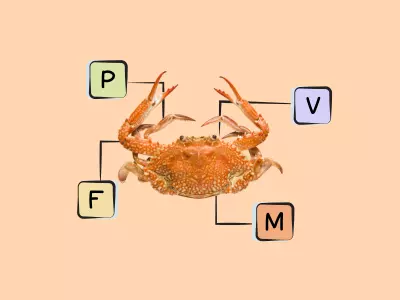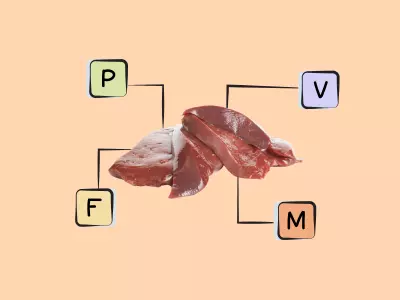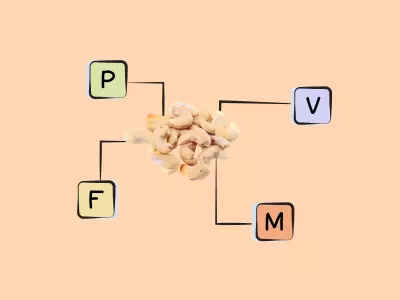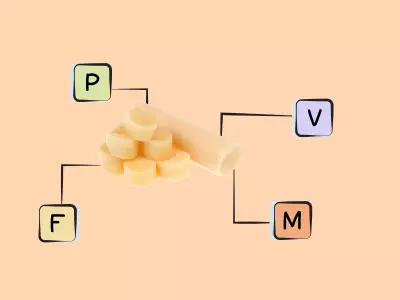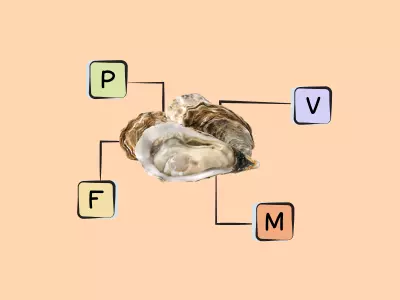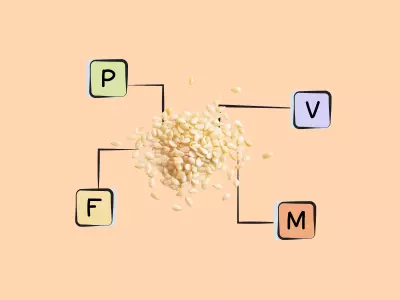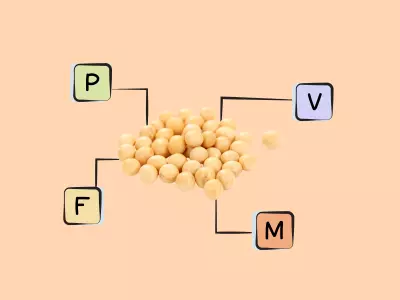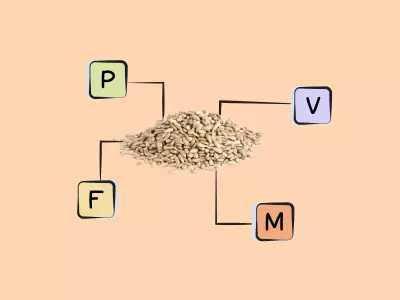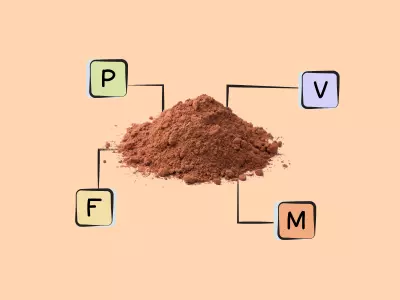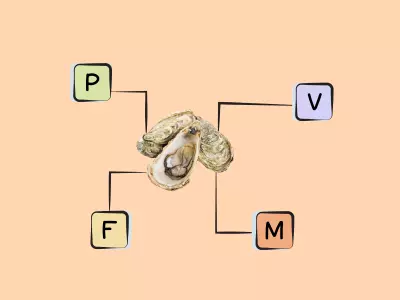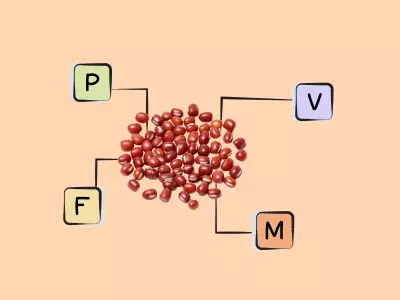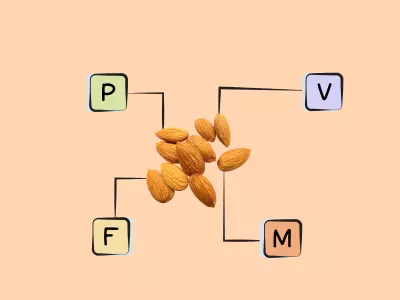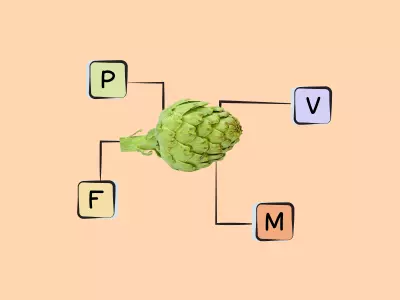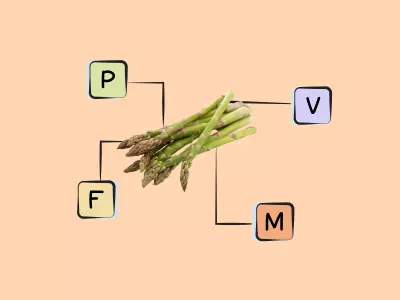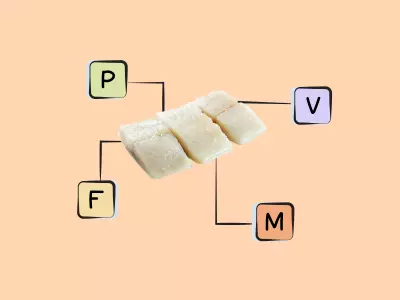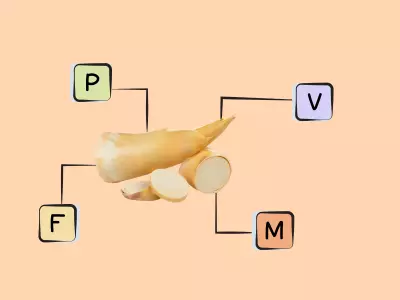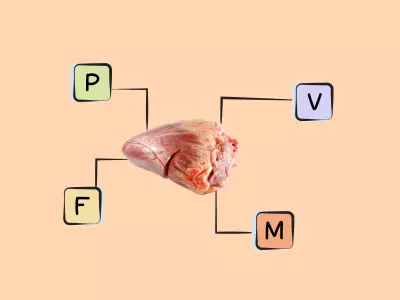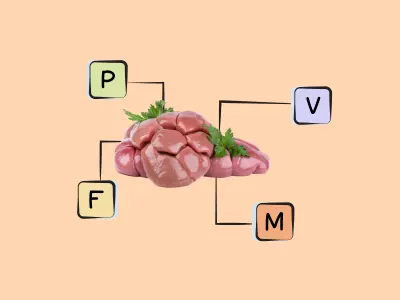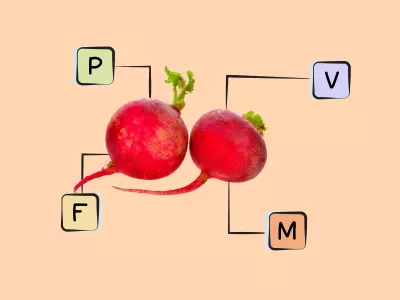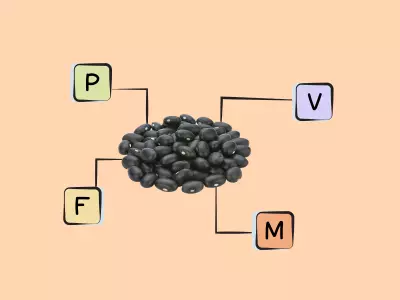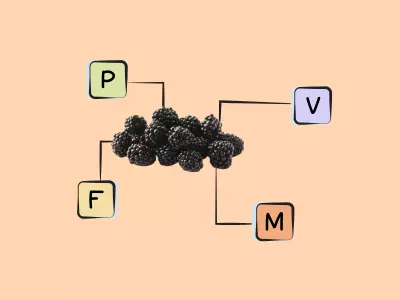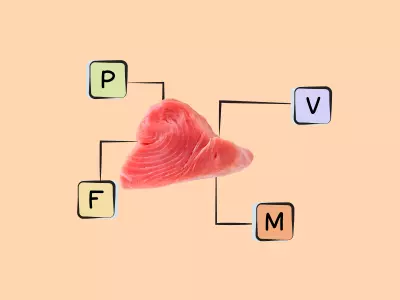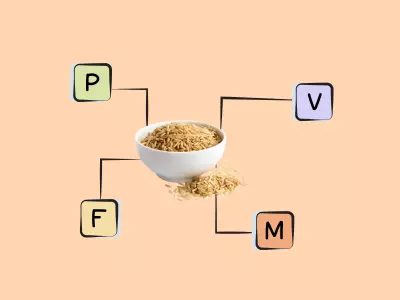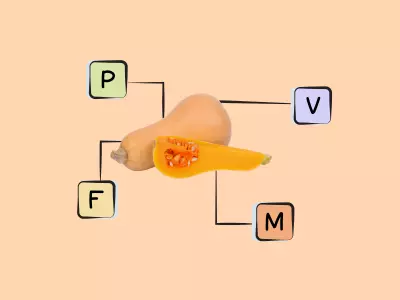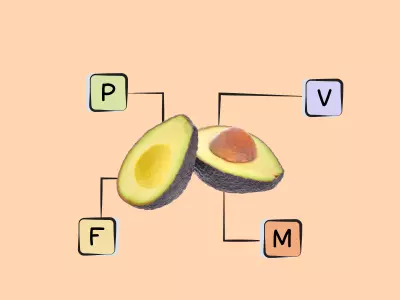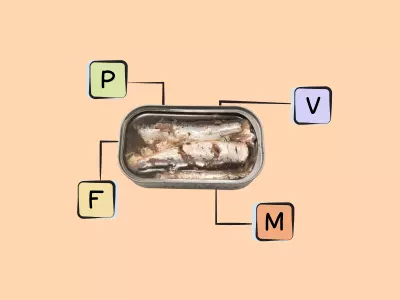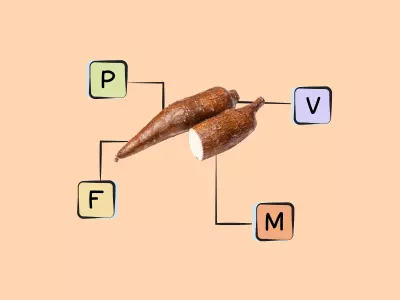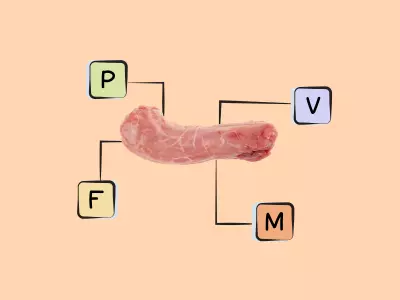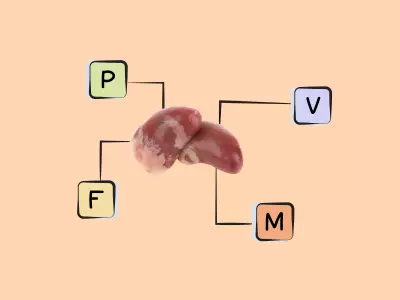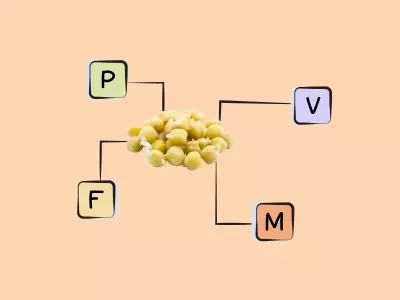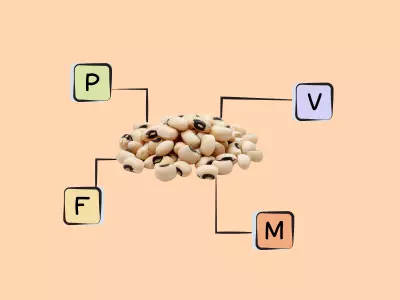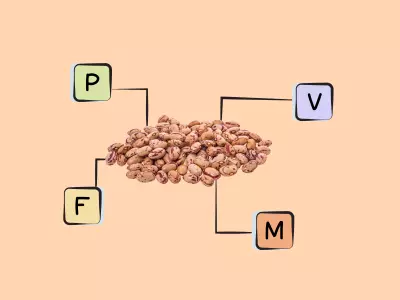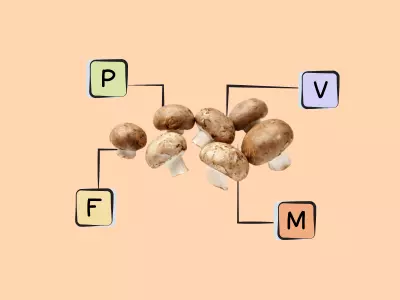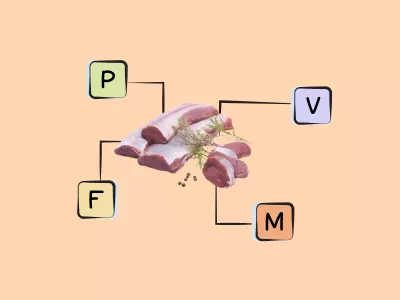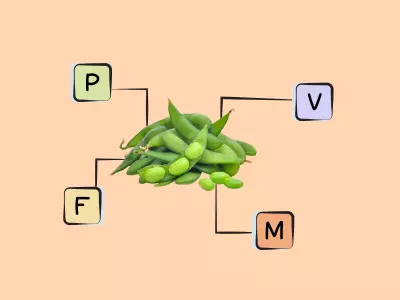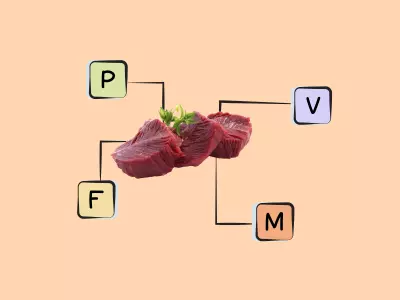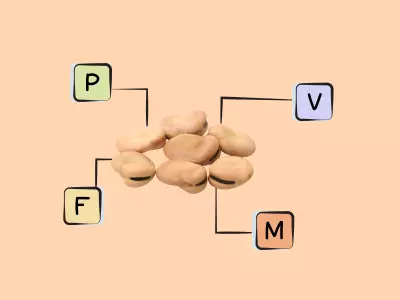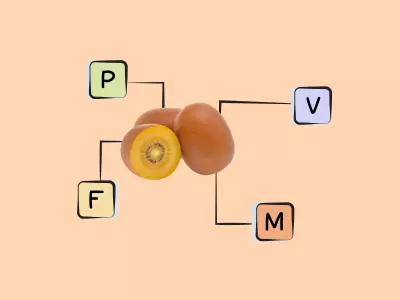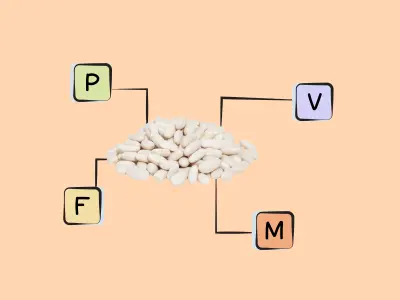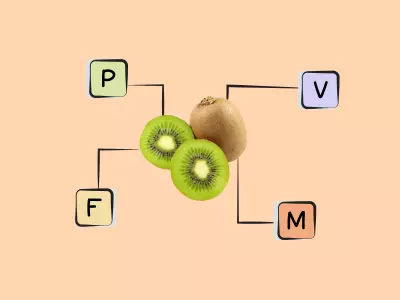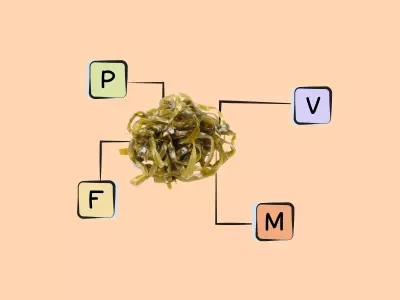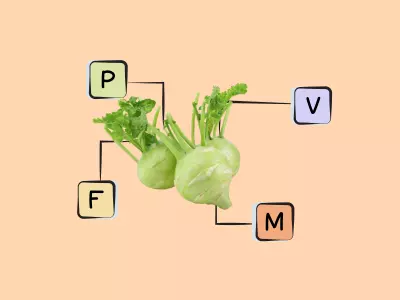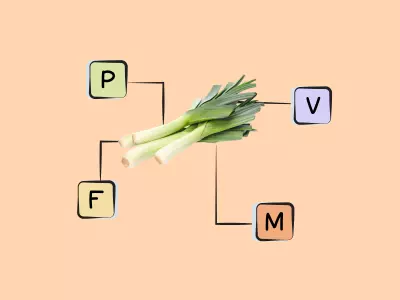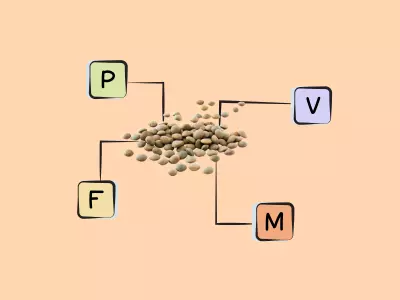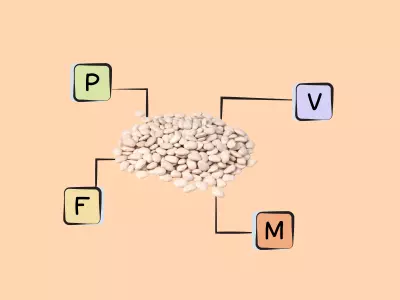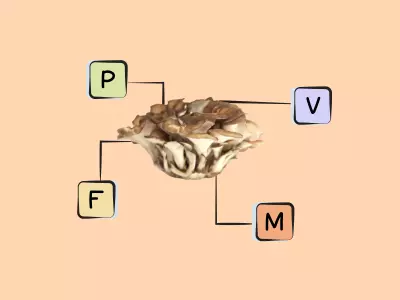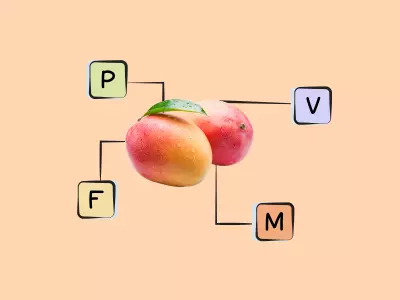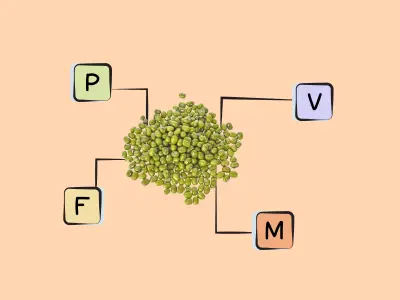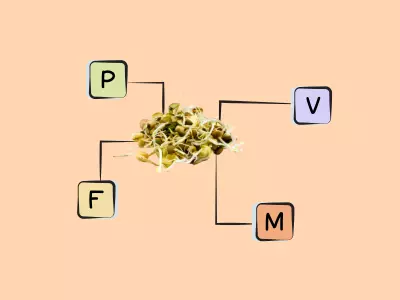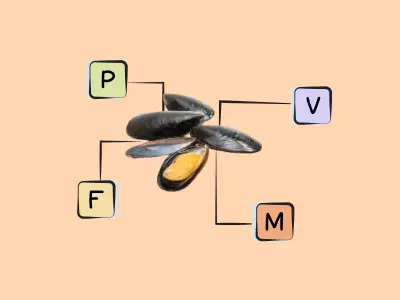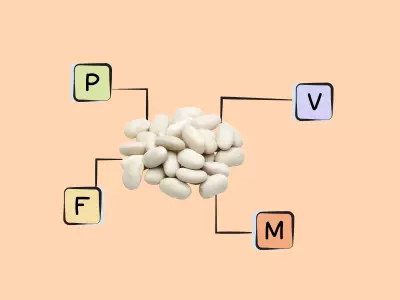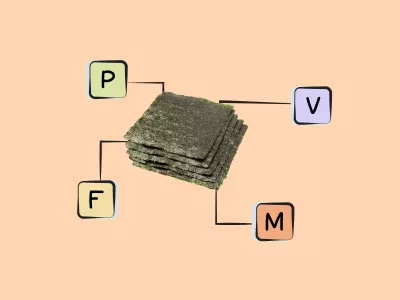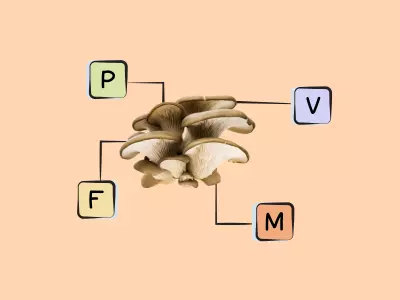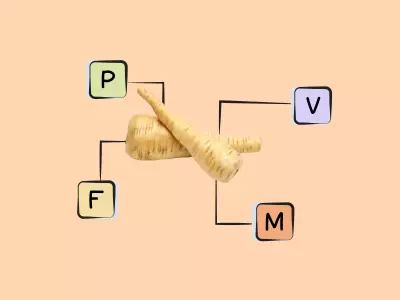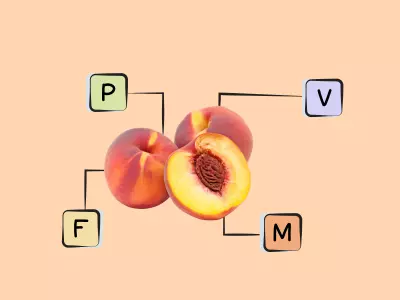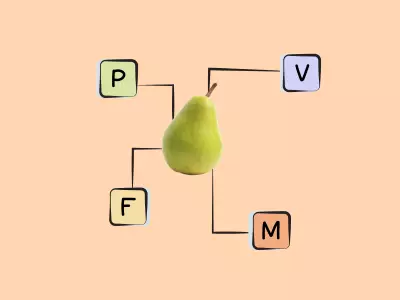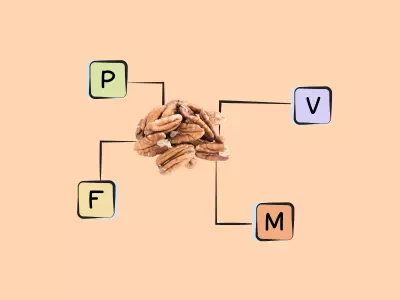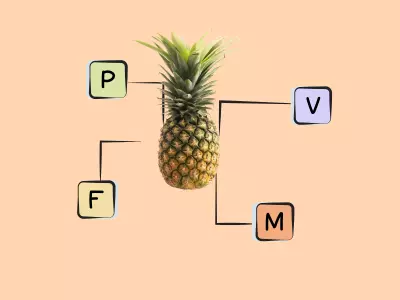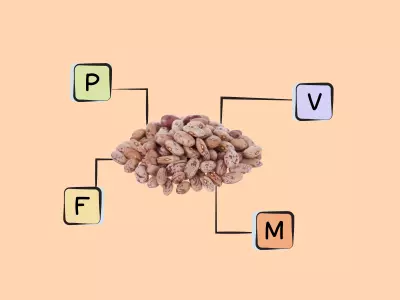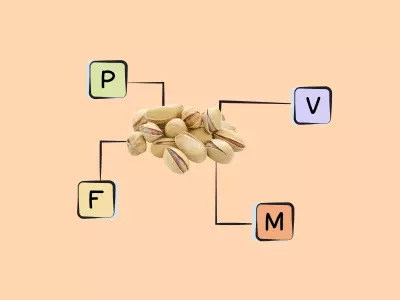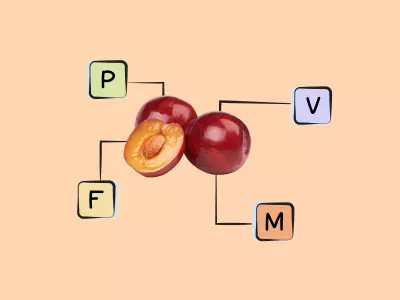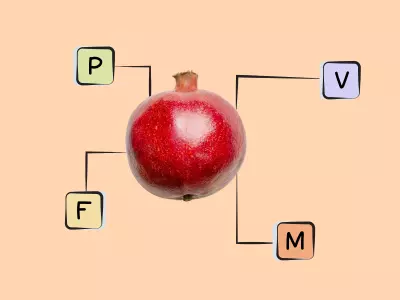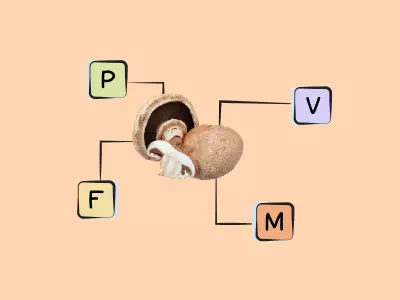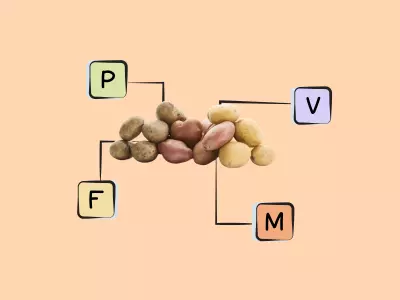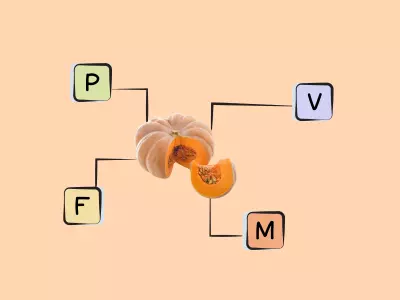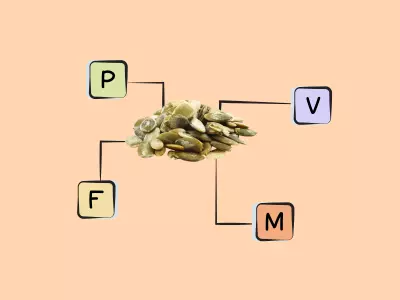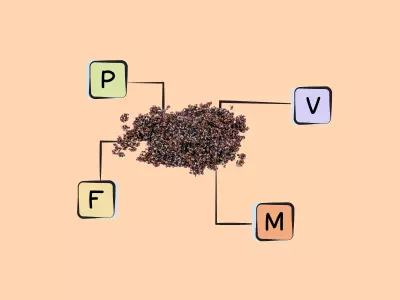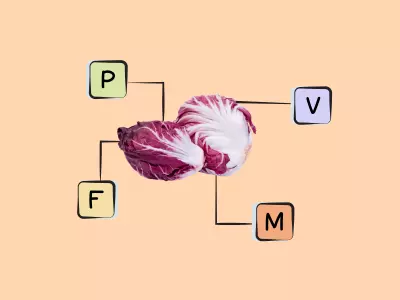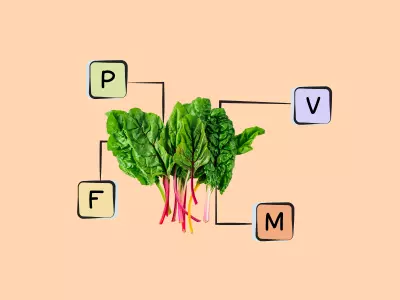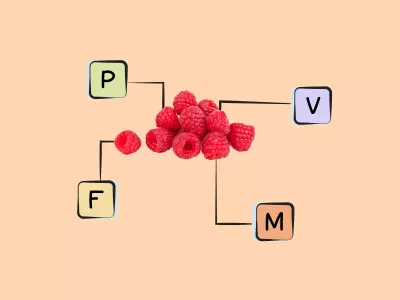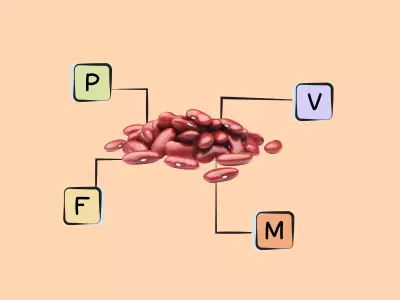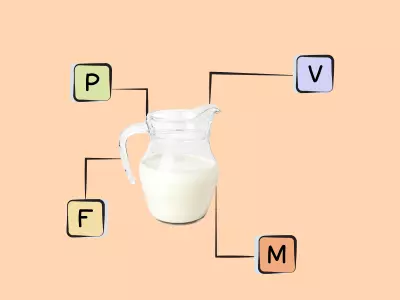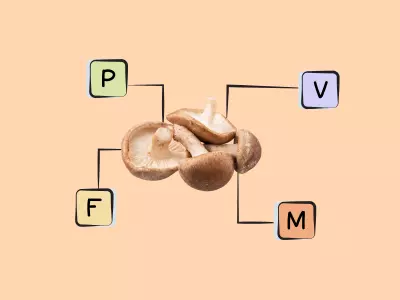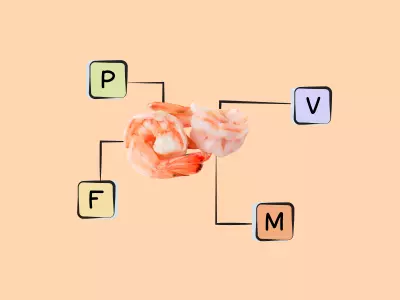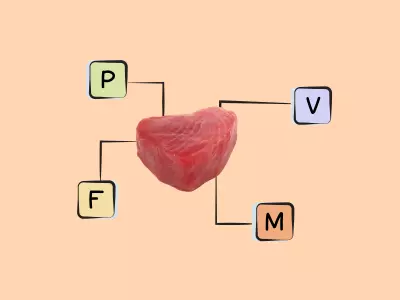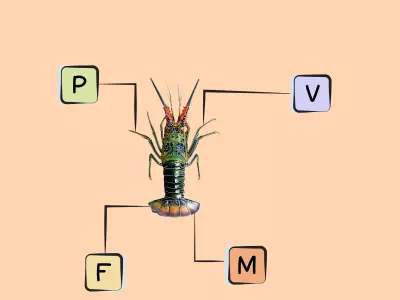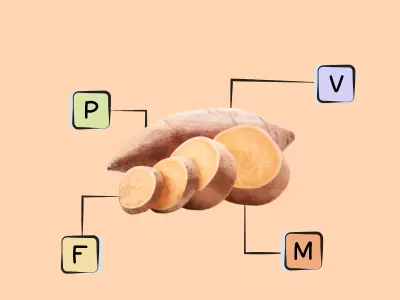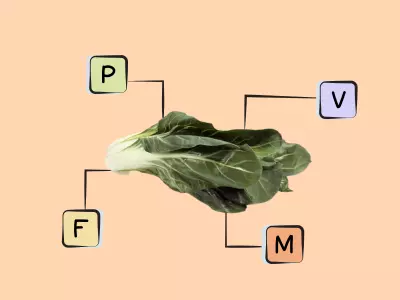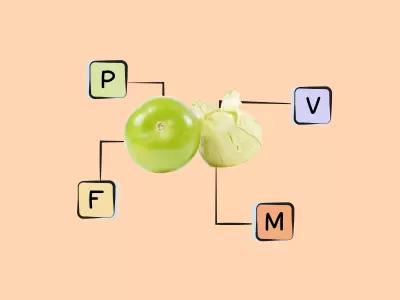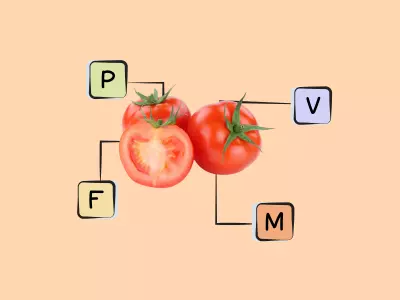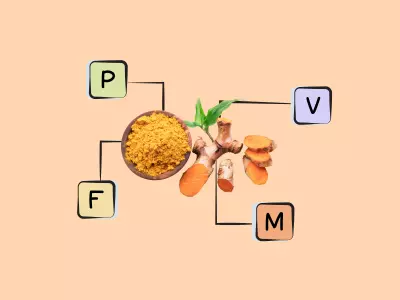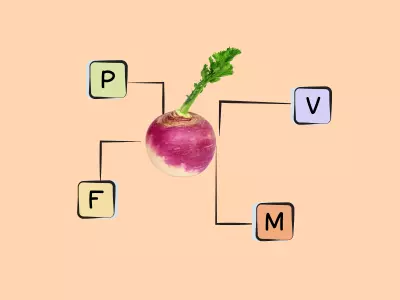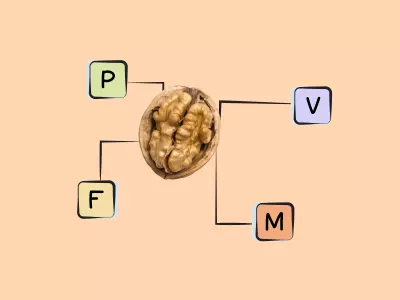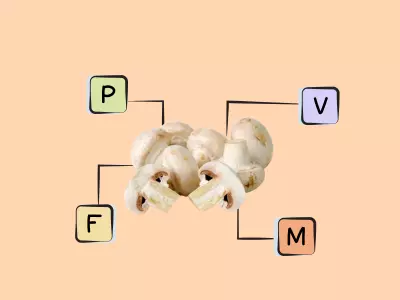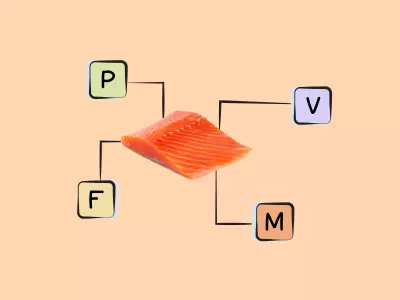Key Takeaways (expand)
- Copper is a trace element required by all living organisms.
- This mineral serves as a component of approximately two dozen proteins and enzymes (called cuproenzymes), making a variety of physiological functions copper-dependent!
- Some of the most important of these functions are connective tissue maturation, bone formation, energy production, iron homeostasis, neurotransmission, and melanin formation.
- Copper also helps scavenge free radicals and facilitate redox reactions, giving it an antioxidant role.
- Copper helps regulate gene expression through its involvement in RNA production and in regulating oxidative stress within cells (which helps activate signal transduction pathways).
- Although elevated blood levels of copper have been associated with a higher risk of cardiovascular disease, there’s little evidence that dietary copper is harmful for the heart; blood levels can rise substantially due to non-dietary factors (including physical stressors like inflammation and disease).
- Copper may be involved in the body’s innate immune response to bacterial infection: it exhibits direct toxicity to pathogens (through its ability to produce hydroxyl radicals), and can also disrupt bacterial protein structures.
- Some limited evidence suggests copper can promote bone health and protect against osteoporosis, possibly via the copper-dependent enzyme lysyl oxidase (which supports collage in the bone matrix); but, more research here is needed!
- Copper may also play a role in cancer progression, particularly angiogenesis (the development of new blood vessels that allow tumors to grow).
- Some evidence suggests a role for copper in protecting against diabetic retinopathy, kidney stones, and erectile dysfunction.
- Copper deficiency is fairly uncommon, but when it occurs, can lead to abnormally low levels of neutrophils (a type of white blood cell), anemia that doesn’t respond to iron therapy, impaired growth, neurological symptoms, and loss of pigmentation on the body; copper deficiency during pregnancy can increase the risk of low birth weight and neurological problems in newborns.
- Excess copper can be hazardous, too: chronically high intake can increase the risk of liver injury, and may alter immune function and antioxidant status.
Table of Contents[Hide][Show]
Copper is a trace element needed by all living things—plant, animal, and microorganism alike! It was first determined to be essential in 1928, when an experiment showed that rats couldn’t produce sufficient red blood cells when they were fed a copper-deficient diet; the issue was corrected when their diet was supplemented with copper-containing ash. But, copper’s medical history goes back much further than that: as early as 400 BCE, Hippocrates was prescribing copper compounds to help treat diseases, and even the Ancient Egyptians were aware of its sterilizing effects (for example, the Edwin Smith Papyrus dating back to the 17th century BCE mentions using copper to sterilize drinking water and chest wounds). In fact, up until the modern era of antibiotics, copper was variously inhaled as a powder, ingested, or applied externally as a way to treat infectious conditions!
The name “copper” derives from the Greek island of Cyprus (the Greek name of which is Kupros), where copper mines date back to the fourth millennium BCE, when Cypriots first fashioned tools from copper.
Copper is a component of a number of important enzymes and proteins, and is needed for the proper development, growth, and maintenance of the brain, heart, bone, connective tissue, and other organs in the body. It’s also involved in cholesterol and glucose metabolism, helps regulate iron levels, and is needed for red blood cell formation.
Excellent sources of copper include oysters and other shellfish, legumes, nuts, seeds, organ meat, sweet potatoes, salmon, tempeh, dark chocolate, avocados, and mushrooms.
The Biological Roles of Copper
In the body, copper exists in the cuprous (Cu1+) or cupric (Cu2+) forms, and serves as a component of about two dozen proteins and enzymes (called cuproenzymes). As a result, a number of physiological functions in the body are copper dependent—including connective tissue maturation, bone production, energy production, neurotransmission, iron homeostasis, and melanin formation! For example, the copper-containing enzyme lysyl oxidase is needed to form cross-links in collagen and elastin (important components of connective tissue), as well as to maintain the health of connective tissue in the blood vessels and heart; it also plays a role in bone formation. Another copper-dependent enzyme, cytochrome c oxidase, catalyzes the reduction of molecular oxygen to water—in turn generating an electrical gradient that mitochondria use to create adenosine triphosphate, or ATP (the energy currency of cells). Cytochrome c oxidase is also involved in synthesizing phospholipids used for the myelin sheath (the protective membrane around nerve cells), while the enzyme dopamine beta-hydroxylase helps convert the neurotransmitter dopamine to another neurotransmitter, norepinephrine—making copper important for nervous system health and functioning. The protein ceruloplasmin helps regulate iron levels in the central nervous system. And, the copper-containing enzyme tyrosinase is needed for the production of melanin, which helps pigment the skin, eyes, and hair.
Copper also plays a major role in scavenging free radicals and facilitating oxidation-reduction (redox) reactions, largely due to its ability to easily donate and accept electrons. It serves as a component of two forms of superoxide dismutase (a very important enzyme group!), which functions as an antioxidant by helping convert free radicals to hydrogen peroxide. These copper-containing forms are the copper/zinc superoxide dismutase found in most cells (including red blood cells), and extracellular superoxide dismutase, which is found in high concentrations in the lungs. Copper-containing ceruloplasmin can also function as an antioxidant through two avenues: one, by binding free copper ions and preventing them from causing oxidative damage, and two, by helping load iron onto transferrin, in turn preventing free iron ions from participating in reactions that generate free radicals.
Another role of copper is in regulating gene expression. This mineral is necessary for the production of RNA, and copper can increase the amount of oxidative stress within cells (which then activates a variety of signal transduction pathways, leading to increased expression of genes involved in detoxifying reactive oxygen species).
Copper is plays a particularly important role in growth and development in early life. During the third trimester of pregnancy, the fetus rapidly accumulates copper in its liver, and by birth, has about four times the copper concentration of an adult! These liver copper stores are then used to supply copper to the rest of the body during the infant’s growth, since human breast milk is relatively low in copper. Interestingly, infants have unique biochemical mechanisms for regulating their copper status during this phase of life; over time, more permanent mechanisms develop.
Copper is likewise required by the immune system to support the production of some cytokines by T cells and regulate T cell proliferation (cell division), and dietary copper is important in resistance to infection.
The body tightly regulates copper homeostasis, and has complex mechanisms to help eliminate excess copper when it builds up, or retain copper when dietary intake is more scarce. When dietary copper intake is low, the body depletes copper stores in the liver to be used elsewhere; when too much copper builds up, the liver excretes it through bile. However, chronic over-ingestion or under-ingestion of copper can disrupt this homeostasis and lead to issues of excess or deficiency!
Interactions with Other Nutrients
Copper has some important relationships with other nutrients—one of the most significant being iron. Adequate copper status is needed for the body to properly metabolize iron, and inadequate copper can disrupt iron homeostasis. Four different copper-containing enzymes (called multi-copper oxidases, or ferroxidases) are involved in oxidizing ferrous iron to its ferric form, which can then be transported by the iron-carrying protein transferrin to the site of red blood cell formation. These ferroxidases include circulating and membrane-bound ceruloplasmin, which represent the vast majority of plasma copper; Zyklopen, which is found in the placenta; and Hephaestin, which is found in the intestine. In addition, copper-deficient animals have been shown to accumulate iron in their livers, due to copper being necessary for transporting iron out of this organ. Human studies, too, have demonstrated that copper deficiency can cause ceruloplasmin deficiency, in turn leading to iron overload or scarring in the liver. Conversely, ingesting high levels of iron has been shown to reduce the absorption of copper, especially in infants. So, these nutrients need to be kept in balance with each other for optimal health!
Copper also interacts with zinc in some noteworthy ways. Ongoing zinc supplementation of 50 mg daily or higher has been shown to induce copper deficiency—likely due to increased synthesis of a protein called metallothionein, which blocks the absorption of certain metals (including zinc!) by binding them and trapping them in intestinal cells. However, copper doesn’t appear to affect zinc status in any similar way.
Some limited research also suggests that high-dose vitamin C supplementation could impair the oxidase activity of copper-dependent ceruloplasmin. One study found that supplementing with 1.5 g daily of vitamin C, for a period of two months, led to a significant drop in ceruloplasmin oxidase activity; another study found that three weeks of supplementing with 605 mg of vitamin C daily likewise decreased ceruloplasmin oxidase activity. Interestingly, copper status remained unaffected during these studies, suggesting the effects of vitamin C on copper and its enzymes warrant further research!
Meanwhile, copper absorption appears to be enhanced when it’s ingested alongside animal protein, phosphate, or citrate.
Want to know the top 25 foods for this awesome nutrient?

The Top 25 Foods for Every Nutrient
The Top 25 Foods for Every Nutrient e-book is a well-organized, easy-to-use, grocery store-friendly guide to help you choose foods that fit your needs of 43 important nutrients while creating a balanced nutrient-dense diet.
Get two “Top 25” food lists for each nutrient, plus you’ll find RDA charts for everyone, informative visuals, fun facts, serving sizes and the 58 foods that are Nutrient Super Stars!
Buy now for instant digital access.
Copper in Health and Disease
Copper serves as a component of numerous enzymes and proteins in the body, giving it diverse roles in the growth, development, and maintenance of various organs (including the heart and brain), bone, and connective tissue. Copper is also involved in glucose and cholesterol metabolism, helps regulate gene expression, can scavenge free radicals, and is needed for the production of red blood cells.
Copper and Cardiovascular Disease
Copper has been studied for its role in cardiovascular health and disease, although the results of this research aren’t always straightforward. In vitro experiments show that free copper and ceruloplasmin can promote LDL oxidation (a contributor to atherosclerotic plaque buildup), making some researchers hypothesize that copper could contribute to cardiovascular disease. But, what happens inside test tubes isn’t always the same as what happens inside of a living body, and very little evidence exists that copper plays a significant pro-oxidant role in the human cardiovascular system. In fact, because it serves as a component of several enzymes with antioxidant properties (such as superoxide dismutase), some researchers even believe copper may help protect against cardiovascular disease!
Human research has been similarly hard to assess. In observational studies, higher blood copper levels have been associated with a higher risk of cardiovascular disease incidence and mortality, as well as with poorer short-term outcomes among people with chronic heart failure or ischemic heart disease. And, a large prospective cohort study of middle-aged men found that high blood levels of copper were associated with a 50% greater risk of all-cause, cardiovascular, and cancer mortality. However, blood copper levels aren’t always a reflection of nutritional intake: they’re essentially a measurement of serum ceruloplasmin, which can fluctuate dramatically depending on a variety of non-dietary factors (for example, its levels can increase by over 50% in response to physical stressors such as disease, inflammation, and trauma—regardless of how much copper is being consumed!). So, higher blood copper levels are sometimes a marker for inflammation-related increases in ceruloplasmin, rather than a high intake from the diet.
In human intervention studies, the results of altering dietary copper levels have likewise been mixed. Some very small studies have shown that reduced copper consumption adversely impacts blood lipids, including raising total and LDL cholesterol while decreasing HDL cholesterol. But, most other studies of this nature have failed to show any effect of copper on blood lipids, including trials of copper supplementation of 2 to 3 mg daily. Similarly, in placebo-controlled trials, copper supplementation of up to 6 mg daily didn’t increase the participants’ LDL susceptibility to oxidation, and actually decreased the susceptibility of their red blood cells to oxidation—supporting the idea that copper’s pro-oxidant properties in vitro don’t happen the same way in our bodies!
Copper and Immune Health
Some evidence shows that copper may be involved in the innate immune response to bacterial infection. Copper exhibits direct toxicity through its ability to produce hydroxyl radicals—which can directly damage the lipids, nucleic acids, and proteins in invading pathogens. Copper can also disrupt protein structures by either binding to amino acids or interacting with polypeptide backbones. As a result of these properties, the body can use copper as a weapon against infection: activated macrophages, for example, accumulate copper in their phagosomes to help destroy microbes! Interestingly, some bacteria express copper tolerance genes that allow them to survive in the presence of copper (such as copper-exporting ATPases and other copper detoxification defenses), making them more resistant to attack from the body’s immune system.
Copper and Bone Health
Research (albeit limited!) suggests that copper could play a supportive role in bone health and protecting against osteoporosis. Some small studies have shown that reduced copper intake leads to increased breakdown of bone tissue—which, long-term, would be expected to cause a decrease in bone mineral density. However, other studies have found that copper supplementation of up to 6 mg daily had no effect on markers of bone breakdown or bone formation. Likewise, some research has shown that elderly patients with hip fractures have significantly lower levels of serum copper compared to matched controls, and one small study found that copper supplementation helped slow the loss of bone mineral density from the lumbar spine; but, other research has found no differences in serum copper levels among women with or without osteoporosis, and larger controlled studies have shown that supplemental copper was less effective than other mineral supplements (particularly calcium) in slowing the loss of bone mineral density. Theoretically, copper could help support bone health due to the activity of the copper-dependent enzyme lysyl oxidase, which supports healthy collagen (an important component in bone matrix!). Overall, it’s difficult to draw conclusions about the real-world effects of dietary copper on bone health with the evidence we currently have available, and more research is needed on this topic!
Copper and Cancer
There’s some evidence that cancer could play a role in cancer progression—especially angiogenesis, or the development of new blood vessels (which enables tumors to grow, invade, and metastasize). A copper-chelating agent called tetrathiomolybdate has been used to test the effects of copper depletion on tumor growth for a number of cancers (including liver cancer, colorectal cancer, breast cancer, kidney cancer, mesothelioma, and squamous cell carcinoma), with studies generally showing that lowering copper levels indeed reduces tumor angiogenesis. However, most of this research has been done in animals or in vitro, with only a handful of pilot studies in humans.
Copper and Diabetic Retinopathy
Copper may play a role in protecting against diabetic retinopathy, a vision-threatening condition affecting the eye’s retina. A 2022 analysis of National Health and Nutrition Examination Survey data, including nearly 4600 diabetic patients, found that after adjusting for confounding variables, those with self-reported retinopathy had significantly lower intakes of copper. Specifically, the highest versus lowest quintile of copper intake was associated with a 33% lower risk of diabetic retinopathy.
Copper and Kidney Stones
There’s some evidence suggesting copper could help protect against kidney stones. A 2022 analysis of 28,623 adults from the National Health and Nutrition Examination Survey database found a non-linear negative association between dietary copper intake and kidney stone risk. The highest versus lowest quartile of copper intake was associated with a 15% lower risk!
Copper and Erectile Dysfunction
Although more research here is needed, some studies have linked higher copper intake with lower risk of erectile dysfunction. A 2022 analysis of National Health and Nutrition Examination Survey data, encompassing 3,745 participants, found that higher dietary intake of trace metals (including copper) was associated with lower prevalence of erectile dysfunction, with the protective effect remaining even after adjusting for confounding variables. Those in the highest quartile of copper intake had a 47% lower risk!
Didn’t know copper was this amazing? Maybe your friends will enjoy this too!
Health Effects of Copper Deficiency
True copper deficiency is relatively uncommon, although in extreme cases, blood levels of copper and ceruloplasmin levels can drop to only 30% of normal values and manifest with clinical symptoms. When severe, copper deficiency can cause anemia that doesn’t respond to iron therapy, as well as abnormally low counts of neutrophils (a type of white blood cell)—which in turn can increase a person’s susceptibility to infection. Similarly, people with copper deficiency and/or genetic conditions that lead to low copper levels have been shown to produce monocytes with impaired responses to immune challenges. Some evidence also suggests that copper insufficiency could reduce the body’s ability to regulate blood cell renewal in general. Less frequently, copper deficiency can cause neurological symptoms, impaired growth, and the loss of pigmentation on the body (due to copper’s role in melanin formation).
During pregnancy and early childhood, copper deficiency can be particularly damaging. Maternal copper deficiency has been linked to low birth weight, as well as to muscle weakness and neurological problems in the newborn. And, copper deficiency in infants and young children can sometimes lead to abnormal bone development and osteoporosis.
People at the greatest risk of copper deficiency include infants and children fed only cow’s milk formula (which is relatively low in copper), infants with chronic diarrhea, people recovering from malnutrition, diabetics, patients with cystic fibrosis, people with malabsorption syndromes such as celiac disease or short bowel syndrome, and people with excessive zinc intake. Iron supplementation can also increase the risk of copper deficiency.
Importantly, low blood copper (technically known as hypocupremia) can result from not only inadequate dietary intake, but also from genetic disorders of copper metabolism, such as aceruloplasminemia (which involves the abnormal accumulation of iron in internal organs) and Wilson’s disease (which causes excess copper to accumulate in the vital organs, but paradoxically can decrease its concentration in the blood!). Similarly, mutations in the ATP7A gene lead to impaired transport of copper within cells, leading to systemic copper deficiency and a decline in copper-dependent enzyme activity—ultimately culminating in a condition called Menkes disease. Along with neurological symptoms (including intractable seizures), Menkes disease can feature connective tissue problems, hair abnormalities, and hemorrhage.
Everything You Need to Jump into Nutrivore TODAY!
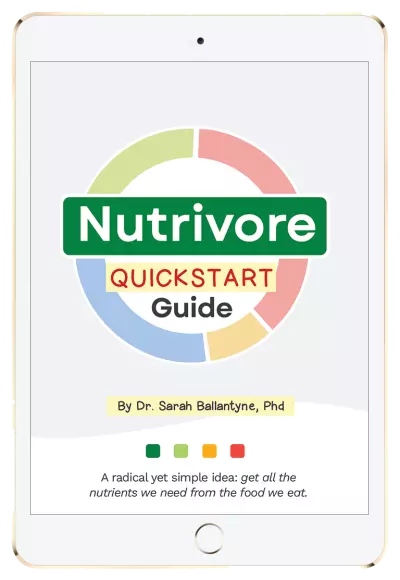
Nutrivore Quickstart Guide
The Nutrivore Quickstart Guide e-book explains why and how to eat a Nutrivore diet, introduces the Nutrivore Score, gives a comprehensive tour of the full range of essential and important nutrients!
Plus, you’ll find the Top 100 Nutrivore Score Foods, analysis of food groups, practical tips to increase the nutrient density of your diet, and look-up tables for the Nutrivore Score of over 700 foods.
Buy now for instant digital access.
Problems From Too Much Copper
Although most health experts agree that too little copper is a bigger public health issue than too much copper, copper toxicity can occur from either acute or chronic excess. Consuming extremely high amounts of copper in one sitting (upwards of 20 to 70 g, usually in the form of copper salts) has led to reports of abdominal pain, nausea and vomiting, headache, diarrhea, tachycardia, dizziness, respiratory difficulty, gastrointestinal bleeding, bloody urine, liver failure, kidney failure, and even death. Consuming water with high copper levels (typically 3 to 6 mg/L) can likewise lead to gastrointestinal upset, nausea, and vomiting.
Meanwhile, long-term high copper intake (30 to 60 mg daily for years) can increase the risk of liver injury, and may impact some markers of immune function and antioxidant status. Intakes of up to 10 mg daily are generally considered the safe upper limit for this nutrient, except in people with genetic disorders impacting copper metabolism.
How Much Copper Do We Need?
The recommended dietary allowance (RDA) for copper is 900 ug daily for adults in general, 1000 ug daily while pregnant, and 1300 ug daily while breastfeeding. Due to nutrient interactions, people supplementing with zinc or iron may need to consume more copper to compensate for its reduced bioavailability (especially during pregnancy!). Meanwhile, different health organizations have set tolerable upper intake levels for copper at 5 to 10 mg daily for adults.
| 0 – 6 months | |||||
| 6 months to < 12 months | |||||
| 1 yr – 3 yrs | |||||
| 4 yrs – 8 yrs | |||||
| 9 yrs – 13 yrs | |||||
| 14 yrs – 18 yrs | |||||
| 19 yrs – 50 yrs | |||||
| 51+ yrs | |||||
| Pregnant (14 – 18 yrs) | |||||
| Pregnant (19 – 30 yrs) | |||||
| Pregnant (31 – 50 yrs) | |||||
| Lactating (14 – 18 yrs) | |||||
| Lactating (19 – 30 yrs) | |||||
| Lactating (31 – 50 yrs) |
Nutrient Daily Values
Nutrition requirements and recommended nutrient intake for infants, children, adolescents, adults, mature adults, and pregnant and lactating individuals.
Best Food Sources of Copper
The following foods have high concentrations of copper, containing at least 50% of the recommended dietary allowance per serving, making them our best food sources of this valuable mineral!
Want to know the top 500 most nutrient-dense foods?

Top 500 Nutrivore Foods
The Top 500 Nutrivore Foods e-book is an amazing reference deck of the top 500 most nutrient-dense foods according to their Nutrivore Score. Think of it as the go-to resource for a super-nerd, to learn more and better understand which foods stand out, and why!
If you are looking for a quick-reference guide to help enhance your diet with nutrients, and dive into the details of your favorite foods, this book is your one-stop-shop!
Buy now for instant digital access.
Good Food Sources of Copper
The following foods are also excellent or good sources of copper, containing at least 10% (and up to 50%) of the daily value per serving.
Nutrivore Is a Game-Changer—These 5 Free Guides Show You Why
Sign up for the free weekly Nutrivore Newsletter and get 5 high-value downloads—delivered straight to your inbox—that make healthy eating simple and sustainable.

Citations
Expand to see all scientific references for this article.
Alarcón OM, Guerrero Y, Ramírez de Fernández M, D’Jesús I, Burguera M, Burguera JL, Di Bernardo ML. Efecto de la suplementación con cobre sobre los valores de presión arterial en pacientes con hipertensión moderada estable [Effect of cooper supplementation on blood pressure values in patients with stable moderate hypertension]. Arch Latinoam Nutr. 2003 Sep;53(3):271-6.
Baker A, Turley E, Bonham MP, O’Connor JM, Strain JJ, Flynn A, Cashman KD. No effect of copper supplementation on biochemical markers of bone metabolism in healthy adults. Br J Nutr. 1999 Oct;82(4):283-90.
Bertinato J, Zouzoulas A. Considerations in the development of biomarkers of copper status. J AOAC Int. 2009 Sep-Oct;92(5):1541-50.
Besold AN, Culbertson EM, Culotta VC. The Yin and Yang of copper during infection. J Biol Inorg Chem. 2016 Apr;21(2):137-44. doi: 10.1007/s00775-016-1335-1.
Bremner I. Manifestations of copper excess. Am J Clin Nutr. 1998 May;67(5 Suppl):1069S-1073S. doi: 10.1093/ajcn/67.5.1069S.
DiSilvestro RA, Joseph EL, Zhang W, Raimo AE, Kim YM. A randomized trial of copper supplementation effects on blood copper enzyme activities and parameters related to cardiovascular health. Metabolism. 2012 Sep;61(9):1242-6. doi: 10.1016/j.metabol.2012.02.002.
Ford ES. Serum copper concentration and coronary heart disease among US adults. Am J Epidemiol. 2000 Jun 15;151(12):1182-8. doi: 10.1093/oxfordjournals.aje.a010168.
Goodman VL, Brewer GJ, Merajver SD. Control of copper status for cancer therapy. Curr Cancer Drug Targets. 2005 Nov;5(7):543-9. doi: 10.2174/156800905774574066.
Guo CH, Wang CL. Effects of zinc supplementation on plasma copper/zinc ratios, oxidative stress, and immunological status in hemodialysis patients. Int J Med Sci. 2013;10(1):79-89. doi: 10.7150/ijms.5291.
Harris ZL, Durley AP, Man TK, Gitlin JD. Targeted gene disruption reveals an essential role for ceruloplasmin in cellular iron efflux. Proc Natl Acad Sci U S A. 1999 Sep 14;96(19):10812-7. doi: 10.1073/pnas.96.19.10812.
Hodgkinson V, Petris MJ. Copper homeostasis at the host-pathogen interface. J Biol Chem. 2012 Apr 20;287(17):13549-55. doi: 10.1074/jbc.R111.316406.
Institute of Medicine (US) Panel on Micronutrients. Dietary Reference Intakes for Vitamin A, Vitamin K, Arsenic, Boron, Chromium, Copper, Iodine, Iron, Manganese, Molybdenum, Nickel, Silicon, Vanadium, and Zinc. Washington (DC): National Academies Press (US); 2001. 7, Copper.
Kelley DS, Daudu PA, Taylor PC, Mackey BE, Turnlund JR. Effects of low-copper diets on human immune response. Am J Clin Nutr. 1995 Aug;62(2):412-6. doi: 10.1093/ajcn/62.2.412.
Kinsman GD, Howard AN, Stone DL, Mullins PA. Studies in copper status and atherosclerosis. Biochem Soc Trans. 1990 Dec;18(6):1186-8. doi: 10.1042/bst0181186.
Klevay LM. Lack of a recommended dietary allowance for copper may be hazardous to your health. J Am Coll Nutr. 1998 Aug;17(4):322-6. doi: 10.1080/07315724.1998.10718769.
Kodama H, Fujisawa C, Bhadhprasit W. Inherited copper transport disorders: biochemical mechanisms, diagnosis, and treatment. Curr Drug Metab. 2012 Mar;13(3):237-50. doi: 10.2174/138920012799320455.
Lazarchick J. Update on anemia and neutropenia in copper deficiency. Curr Opin Hematol. 2012 Jan;19(1):58-60. doi: 10.1097/MOH.0b013e32834da9d2.
Leone N, Courbon D, Ducimetiere P, Zureik M. Zinc, copper, and magnesium and risks for all-cause, cancer, and cardiovascular mortality. Epidemiology. 2006 May;17(3):308-14. doi: 10.1097/01.ede.0000209454.41466.b7.
Liu RJ, Li SY, Xu ZP, Yu JJ, Mao WP, Sun C, Xu B, Chen M. Dietary metal intake and the prevalence of erectile dysfunction in US men: Results from National Health and Nutrition Examination Survey 2001-2004. Front Nutr. 2022 Nov 3;9:974443. doi: 10.3389/fnut.2022.974443.
Looker AC, Melton LJ 3rd, Harris TB, Borrud LG, Shepherd JA. Prevalence and trends in low femur bone density among older US adults: NHANES 2005-2006 compared with NHANES III. J Bone Miner Res. 2010 Jan;25(1):64-71. doi: 10.1359/jbmr.090706.
Malek F, Jiresova E, Dohnalova A, Koprivova H, Spacek R. Serum copper as a marker of inflammation in prediction of short term outcome in high risk patients with chronic heart failure. Int J Cardiol. 2006 Nov 10;113(2):e51-3. doi: 10.1016/j.ijcard.2006.05.022.
Marquardt ML, Done SL, Sandrock M, Berdon WE, Feldman KW. Copper deficiency presenting as metabolic bone disease in extremely low birth weight, short-gut infants. Pediatrics. 2012 Sep;130(3):e695-8. doi: 10.1542/peds.2011-1295.
Meyer LA, Durley AP, Prohaska JR, Harris ZL. Copper transport and metabolism are normal in aceruloplasminemic mice. J Biol Chem. 2001 Sep 28;276(39):36857-61. doi: 10.1074/jbc.M105361200.
Milne DB, Nielsen FH. Effects of a diet low in copper on copper-status indicators in postmenopausal women. Am J Clin Nutr. 1996 Mar;63(3):358-64. doi: 10.1093/ajcn/63.3.358.
Milne DB, Omaye ST. Effect of vitamin C on copper and iron metabolism in the guinea pig. Int J Vitam Nutr Res. 1980;50(3):301-8.
Mutlu M, Argun M, Kilic E, Saraymen R, Yazar S. Magnesium, zinc and copper status in osteoporotic, osteopenic and normal post-menopausal women. J Int Med Res. 2007 Sep-Oct;35(5):692-5. doi: 10.1177/147323000703500514.
Percival SS. Copper and immunity. Am J Clin Nutr. 1998 May;67(5 Suppl):1064S-1068S. doi: 10.1093/ajcn/67.5.1064S.
Prohaska JR. Impact of copper limitation on expression and function of multicopper oxidases (ferroxidases). Adv Nutr. 2011 Mar;2(2):89-95. doi: 10.3945/an.110.000208.
Puchkova LV, Babich PS, Zatulovskaia YA, Ilyechova EY, Di Sole F. Copper Metabolism of Newborns Is Adapted to Milk Ceruloplasmin as a Nutritive Source of Copper: Overview of the Current Data. Nutrients. 2018 Oct 30;10(11):1591. doi: 10.3390/nu10111591.
Rock E, Mazur A, O’connor JM, Bonham MP, Rayssiguier Y, Strain JJ. The effect of copper supplementation on red blood cell oxidizability and plasma antioxidants in middle-aged healthy volunteers. Free Radic Biol Med. 2000 Feb 1;28(3):324-9. doi: 10.1016/s0891-5849(99)00241-5.
Stafford SL, Bokil NJ, Achard ME, Kapetanovic R, Schembri MA, McEwan AG, Sweet MJ. Metal ions in macrophage antimicrobial pathways: emerging roles for zinc and copper. Biosci Rep. 2013 Jul 16;33(4):e00049. doi: 10.1042/BSR20130014.
Strause L, Saltman P, Smith KT, Bracker M, Andon MB. Spinal bone loss in postmenopausal women supplemented with calcium and trace minerals. J Nutr. 1994 Jul;124(7):1060-4. doi: 10.1093/jn/124.7.1060.
Thackeray EW, Sanderson SO, Fox JC, Kumar N. Hepatic iron overload or cirrhosis may occur in acquired copper deficiency and is likely mediated by hypoceruloplasminemia. J Clin Gastroenterol. 2011 Feb;45(2):153-8. doi: 10.1097/MCG.0b013e3181dc25f7.
Tsang T, Posimo JM, Gudiel AA, Cicchini M, Feldser DM, Brady DC. Copper is an essential regulator of the autophagic kinases ULK1/2 to drive lung adenocarcinoma. Nat Cell Biol. 2020 Apr;22(4):412-424. doi: 10.1038/s41556-020-0481-4.
Turnlund JR, Jacob RA, Keen CL, Strain JJ, Kelley DS, Domek JM, Keyes WR, Ensunsa JL, Lykkesfeldt J, Coulter J. Long-term high copper intake: effects on indexes of copper status, antioxidant status, and immune function in young men. Am J Clin Nutr. 2004 Jun;79(6):1037-44. doi: 10.1093/ajcn/79.6.1037.
Turnlund JR, Keyes WR, Kim SK, Domek JM. Long-term high copper intake: effects on copper absorption, retention, and homeostasis in men. Am J Clin Nutr. 2005 Apr;81(4):822-8. doi: 10.1093/ajcn/81.4.822.
Uauy R, Olivares M, Gonzalez M. Essentiality of copper in humans. Am J Clin Nutr. 1998 May;67(5 Suppl):952S-959S. doi: 10.1093/ajcn/67.5.952S.
Vashchenko G, MacGillivray RT. Multi-copper oxidases and human iron metabolism. Nutrients. 2013 Jun 27;5(7):2289-313. doi: 10.3390/nu5072289.
Zhang G, Sun X, Yuan T, Guo C, Zhou Z, Wang L, Dou G. Certain Dietary Nutrients Reduce the Risk of Eye Affliction/Retinopathy in Individuals with Diabetes: National Health and Nutrition Examination Survey, 2003-2018. Int J Environ Res Public Health. 2022 Sep 26;19(19):12173. doi: 10.3390/ijerph191912173.
Zhu W, Wang C, Wu J, Chen S, Mao W, Chen Y, Chen M. Dietary copper intake and the prevalence of kidney stones among adult in the United States: A propensity score matching study. Front Public Health. 2022 Aug 30;10:973887. doi: 10.3389/fpubh.2022.973887.



